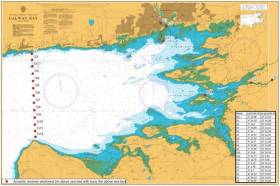Displaying items by tag: Fish Tags
Marine Notice: Deployment Of Fish Tag Detectors In Galway Bay
#MarineNotice - The latest Marine Notice from the Department of Transport, Tourism and Sport (DTTAS) advises that Inland Fisheries Ireland (IFI) and SmartBay Ireland will be carrying out the deployment of an underwater array of fish tag detectors in Galway Bay as outlined in Foreshore Licence FS6536.
The deployment operations for the array will take place between Spiddal and Blackhead and in the Corrib and Dunkellin estuaries, which are part of Galway Bay.
The acoustic array consists of 19 individual receivers as detailed in Marine Notice No 8 of 2016, a PDF of which is available to read or download HERE.
Deployment operations will be carried out by MV Tarrea Queen (Callsign EIAC3) and will take place from 3-17 March 2016. Subject to weather conditions, the operations may extend an additional two weeks following this planned period.
Each mooring/receiver will be marked with a subsurface buoy at a depth of >8m to avoid any potential fouling with any craft. All moorings and associated infrastructure will be removed following the completion of the study.
Consultation with fishermen was carried out during the Foreshore Licence process to ensure that equipment was not deployed in areas utilised by commercial fishermen.
All units will be clearly marked with IFI logos and numbered so that any unintentional retrieval can be notified to IFI through the contact details provided in the Marine Notice.





























































